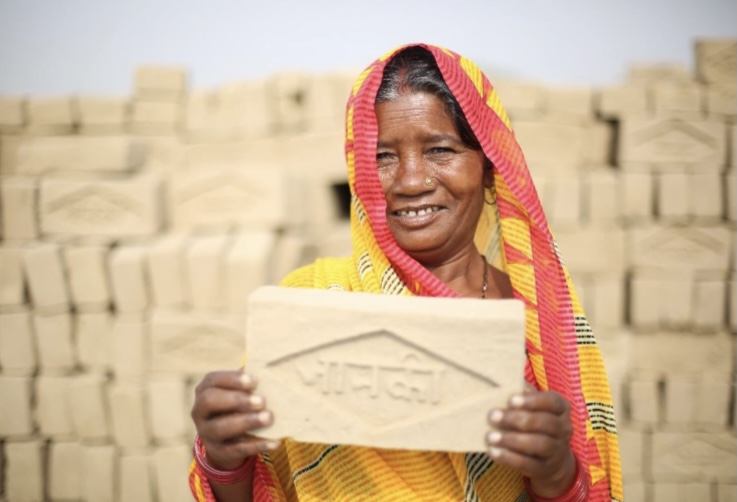Building Freedom Brick by Brick | Kukdaha Village Story

The mistreatment of residents from Kukdaha was typical of Indian “brick belt” slavery. You might think that once freed, they would never want to make bricks again. But these survivors decided to do in freedom what they did in slavery. Except this time, they’d get paid and use the earnings to build new lives in freedom. Trapped by Vicious Slave Holders Kukdaha slavery survivor Sanjafi remembers the day that slave holders raided his village, and the constant mistreatment that followed. “I saw others’ thatched huts were being torched, and they threw my things in the fire, Sanjafi says. “When we were in slavery, people beat us and we didn’t tell anyone. One laborer in our group died from being beaten so badly at the brick kiln.” “The slavery owner locked us in his office and forced my brother to lick up his spit,” survivor Sitara recalls. “We were very afraid and threatened.” The crushing mechanisms of slavery are insidious, humiliating and powerful. Small loans taken out in times of crisis lead to forced labor for entire families. If unrelenting psychological pressure fails, slave holders enforce their grip through direct violence. Vulnerability is the key factor. Impoverished villagers who lack financial, legal, medical, and educational services are most likely to borrow from predatory moneylenders. Once they are trapped in slavery, slaves endure inhuman treatment. “We were in very bad conditions,” survivor Gopal says. “We couldn’t run away. My wife was in critical condition, and even then the brick kiln owner refused to pay us.” Breaking Free & Staying Free with the help and support of Free the Slaves and our front-line partner organization, the Kukdaha slaves were rescued and established a community vigilance committee. This is the heart of the Free the Slaves strategy, which has freed more than 10,000 people worldwide. The goal is to not only liberate people from slavery, but to change the social, cultural, political and economic conditions that allowed them to become enslaved. That way, once people break free, they stay free – and nobody is enslaved in their place. Kukdaha residents came up with an idea for rebuilding their lives and regaining their livelihoods that was remarkably inspiring— they decided to start their own brick plant. Today the survivors of Kukdaha sustain their freedom by making bricks, together. “Starting our own brick kiln is like starting a family business,” Gopal says. “It’s like we are working hard for our own family. Now we live a happy life, and in the future our children will live happy lives.” The villagers chose to stamp their bricks with “Ram Janki,” the names of a god and goddess who are husband and wife—just like many couples now working freely at the Kukdaha brick plant. “Having our own brick kiln makes us happy,” Sitara says. “And if more freed people work here, I’ll be even happier.” They say: “With this brick, we build houses and earn our living. This brick is necessary for our progress. This brick means freedom.”